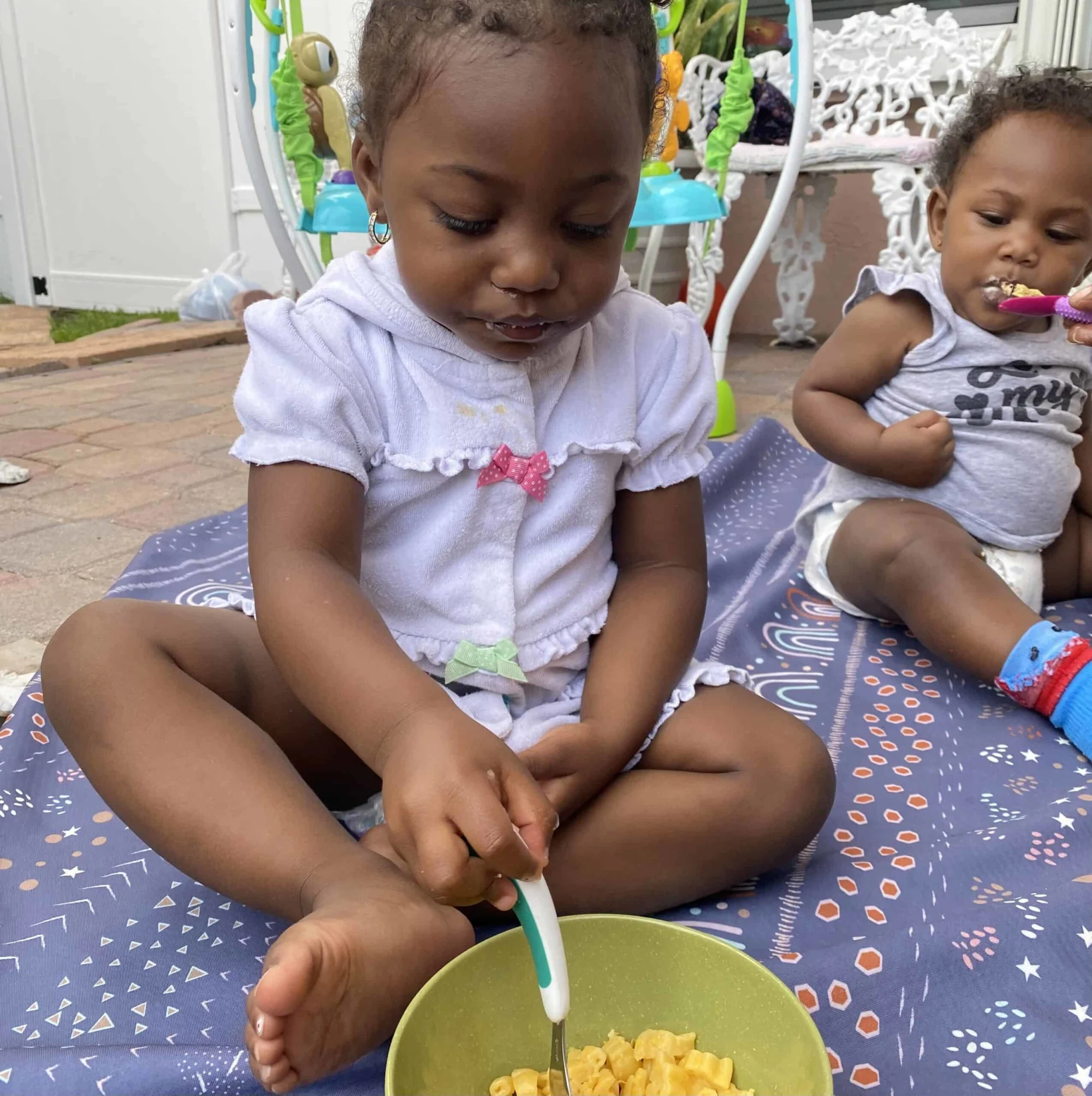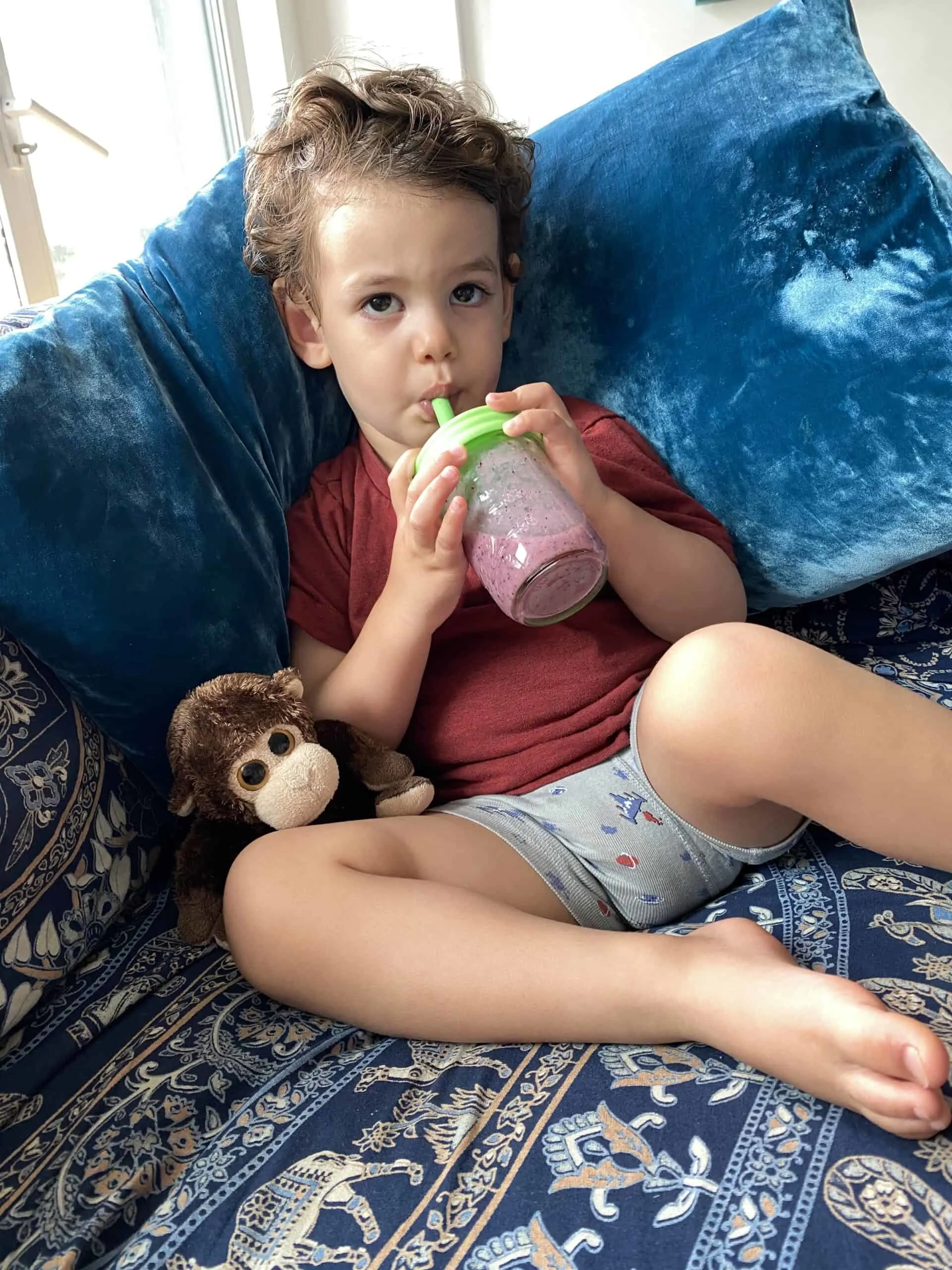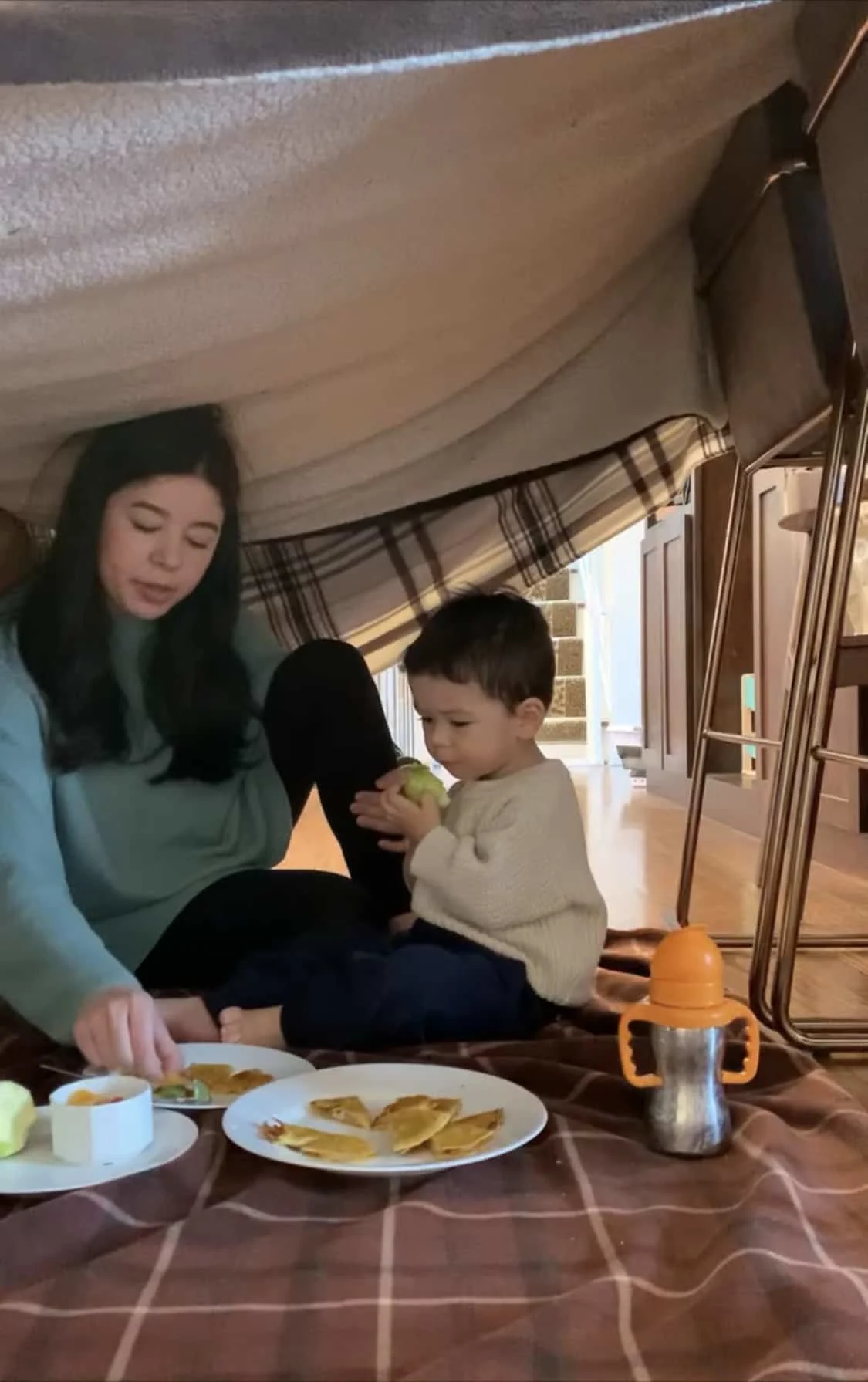How to Feed Babies & Toddlers After COVID

Can COVID-19 impact smell and taste?
The COVID-19 pandemic has resulted in substantial changes in our lives and the lives of our children. The loss of smell and taste and the change in the eating habits of children and adults infected with COVID-19 is well documented. While COVID-19 can present with a myriad of symptoms—fever, cough, diarrhea, vomiting, and sore throat, among others—the incidence of loss of smell (anosmia) and change in taste (dysgeusia) has been reported in upwards of 37%-41% pediatric and adult patients. Additionally, studies have found that these tend to be one of the first symptoms and, in people that are largely asymptomatic, may be the only symptoms.
Capturing anosmia and dysgeusia among young children, especially those who are pre-verbal, is incredibly difficult and prevalence may be largely underreported. Children under the age of 2 may not have the complex expressive language skills to communicate changes to their smell and taste. It has been suggested that sudden food aversion—abrupt refusal to eat solids—be considered a proxy for change in taste and/or loss of smell in young children. Abrupt food refusal may even be one of the first symptoms of COVID-19 among young children, especially those less than 2 years, as suggested by a recently published case. Unfortunately, it is well documented that anosmia and dysgeusia due to COVID-19 can vary in duration from two days to several months. Regardless of the duration of these symptoms, the result could be a prolonged aversion to a variety of foods that a child previously enjoyed and mealtime stressors for the whole family.
Why does COVID-19 result in food aversion?
Food aversion can come from a variety of causes or scenarios: prolonged spoon-feeding, limited exposure to tastes, smells, and textures, sudden negative associations with food, and more. We cannot discount the effects that illness may have on a child’s desire and overall interest in eating. Food refusals are common in children when sick with any respiratory infection or stomach bug and we should expect the same for children who are sick with COVID-19. Have you ever sworn off a food that gave you food poisoning or the last food that you happened to eat before getting the stomach flu? Food aversion happens for a myriad of reasons and can happen at any age.
In the case of COVID-19, we suspect children are presenting with food aversion because of a significant change in smell and taste. However, there may be a variety of factors contributing to the aversion. Most toddlers experience food neophobia—or the fear of new foods—so they may only feel safe eating familiar foods. Now imagine that instead of familiar strawberries tasting sweet or your favorite ground beef dish tasting savory, they both taste bitter or sour or completely different in a way that you can’t describe yet. As a toddler with a fear of new foods, this can be very upsetting and result in fear or aversion to all foods. A toddler may also feel tricked, as the food doesn’t taste as expected, and lose trust in their caregiver. While this might sound like a stretch, a study completed on children undergoing chemotherapy as treatment for cancer found that children experienced changes to taste, and these changes were reported by the children to be responsible for poor food intake and later aversions. We suspect a similar issue at play in children who have loss of smell and/or taste post COVID-19 infection.
Additionally, the overall anxiety and stress caused by school or daycare closures, sick family members, and social isolation may play into picky eating for some children, leading to more rigid behavior and control seeking, or increased tantrums.
How to target picky eating following COVID-19 in toddlers?
In the early stages of illness, focus on hydration while continuing to bring the child to the table if they have the energy to do so. Great hydration choices for toddlers older than 12 months include:
Milk (cow’s milk, breast (human) milk, or milk alternative)
Water
Pedialyte, coconut water, or breast (human) milk popsicles
Brothy soups
Avoid pushing the child to eat in this phase. Focus on keeping the child comfortable. For example, you might bring the child to the table but let them cuddle in your lap. This way if they have the energy and desire to eat, they are right there at the table and can join in if they choose, but also have your comforting arms to relax. It’s okay If coming to the table is not possible during the acute stages of infection but try to get back to the table whenever possible.
As the child starts to recover, and you believe they have the energy to join the meal at the table, consider saying something like:
“You don’t have to eat anything, but just like we do every night, we’re all going to sit at that table.”
OR
“I know you’re not feeling well, would you like to sit on my lap tonight?”
Even if the child is not interested in eating, maintain your normal mealtime schedule during the post-illness phase. Continue to offer food at regular intervals to maintain consistency.
If you find that your child frequently refuses foods they happily accepted pre-illness, you may have to put in a bit of extra work to help them re-establish their usual eating patterns.


Following the acute stages of infection, try the following steps:
Cook or prep a meal together. Bring the toddler into the kitchen and let them help you cut (with a child-safe knife), mix, and cook. Research shows cooking promotes interest in new foods.
Cook together for a snack or meal that you won’t be serving to the child to keep the activity low-pressure.
Cooking doesn’t have to be complicated. Pull the green tops off strawberries and put them in a bowl, or use a child-safe knife to cut a banana and arrange everything on a plate.
Remember that the taste of familiar and preferred foods may be affected, so this may be the time to prep unfamiliar foods.
Name the food and describe it according to how it feels, looks, or acts. We want to try to give toddlers the language to describe their foods, but we also want to acknowledge that their descriptors may not match ours right now, especially without a clear sense of smell or taste. Focus instead on how the food feels, looks, or acts instead of on how it tastes. Try asking:
“What does the mango feel like to you?”
“It’s orange like a peach.”
“Do you think there is juice in here if we mash it?”
Provide pea-sized pieces of familiar and non-familiar foods. While typically this would be something you may do with a new food, when recovering from anosmia and dysgeusia, try serving just a few very small pieces of each food at meals. Why? Remember, everything may taste different. We don’t want to overwhelm the child with a large plate of food. Keep a plate of the whole food or entire dish nearby, both to show the toddler what the dish is and so they can ask for more if they feel up for it.
Have meals and snacks away from the table. As the child is further removed from their infection, if they continue to refuse meals, especially if they seem unhappy coming to the table for mealtimes in general, consider moving away from the table for a few days to decrease stress and increase the novelty. Sometimes a change of environment is enough to re-spark a child’s desire to interact with and eat the food you serve. Remember that the child should be seated while eating. Walking, running, or playing with food in their mouth is not safe. Try:
Set up a blanket outside or in a park.
Eat in a pillow fort in the living room.
Serve a snack in the child’s playhouse in the yard.
Use empathy and coping strategies to help the child calm, then engage with an activity. If the toddler refuses a meal, try saying following:
“Okay, I hear you.” [Pause] “You don’t have to eat this if you don’t want it.”
“Would you like a hug or to sit on my lap for a minute to help calm down?”
Once they are calm, try: “Please help me sprinkle these toppings (sprinkles, nutritional yeast, hemp seeds) on this dish.”
“That’s okay if you’re not hungry now. Our next meal will be in two hours.”
Consider increasing the flavor of the food to see if this helps. For example, you might add more seasoning (herbs and spices, not salt), add flavors like lemon or vinegar, or use extra sauce for dipping. These flavors might be strong enough to come through as the child’s smell and sense of taste return.
Rate and review different foods after a meal. Create a chart with emoji faces that you and the child can circle or color to describe how much they like or dislike a food.
These choices may be all over the place, even for the same food on consecutive days—that’s okay.
See if you can find patterns in what the child is rating foods, especially shortly after infection. For instance, note if your child seems to rate all acidic foods as “worst” or perhaps even best.
You may notice that all sweet foods seem preferred for now. It may not be a consistent rating system, but it may provide insight as to which flavors are most affected.
Whatever you find out may help you plan meals and choose flavor combinations for the next few days or weeks as your child recovers.


Following the acute stages of infection, avoid the following:
Don’t pressure the child to eat. We understand that this may be difficult when you see new picky behaviors and food refusals. We want our children to get back to “normal”, especially after something as stressful as COVID-19. But the more a child feels pressure to eat, the less they will eat.
Don’t praise eating or tasting. Most children will experience this as pressure. Refrain from all forms of pressure, including positive pressure (e.g., “Good job for eating that!”). This could backfire with a child with anosmia and dysgeusia, as they may eat in the moment, but have a negative feeling of pressure and poor taste associated with the meal/food.
Avoid saying, “But you used to love this food.” Especially with very young children that cannot explain taste changes to adults. Even though that might make sense to you, this may be confusing or frustrating to the child.
Avoid making a big deal if the child says they don’t like a food. Keep in mind that those preferences are likely fleeting and will probably change once your child’s sense of smell and taste return, so no need to avoid those foods in the future.
For more support, see our guides on reversing picky eating for more strategies to reverse picky eating.
How to help babies and infants get back to solids after COVID-19 infection?
It's so difficult to see your infant sick and seem disinterested in food—especially things they used to voraciously explore. Remember: infants younger than 12 months of age still rely on breast (human) milk or formula as the primary source of nutrition and hydration. Solid foods are a cherry on top of the cake.
During the active illness and early recovery phases, focus on hydration:
Nurse baby and give bottles often, even more often than before the illness.
Offer Pedialyte or breast (human) milk popsicles.
Focus on baby getting nutrition from milk feeds.
Continue a regular mealtime schedule where baby comes to the table with you while you eat. Let them sit on your lap and give them the opportunity to explore table food if they'd like. Do not force, pressure, or encourage them to eat anything.
The idea is to maintain a mealtime routine—not "get" baby to eat anything.
Overall, give baby a few days or weeks to recover, be conscientious that their taste buds may have changed and let baby slowly warm back up to food.
Ready to get started?
Download the app to start your journey.
Expert Tips Delivered to Your Inbox
Sign up for weekly tips, recipes and more!
